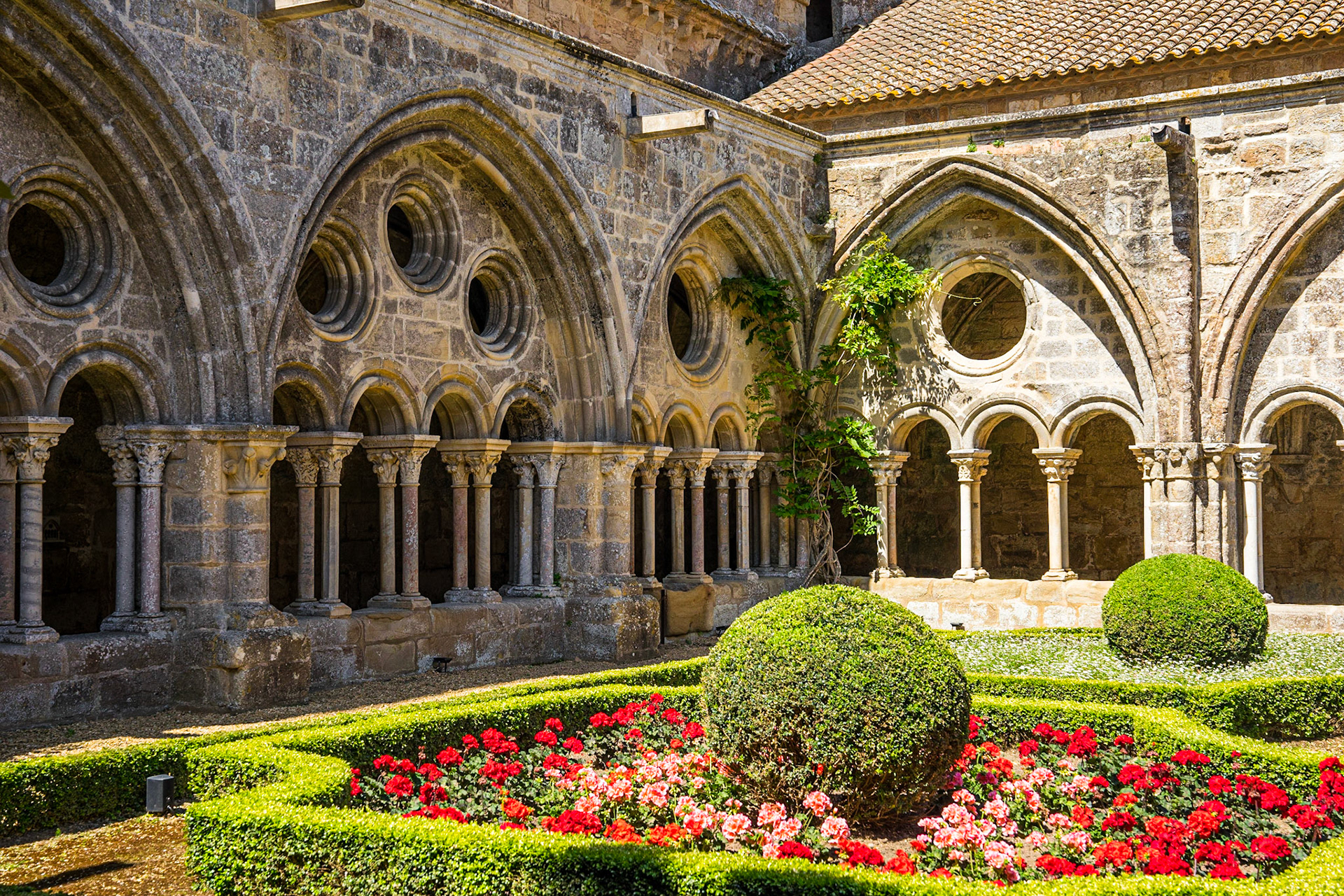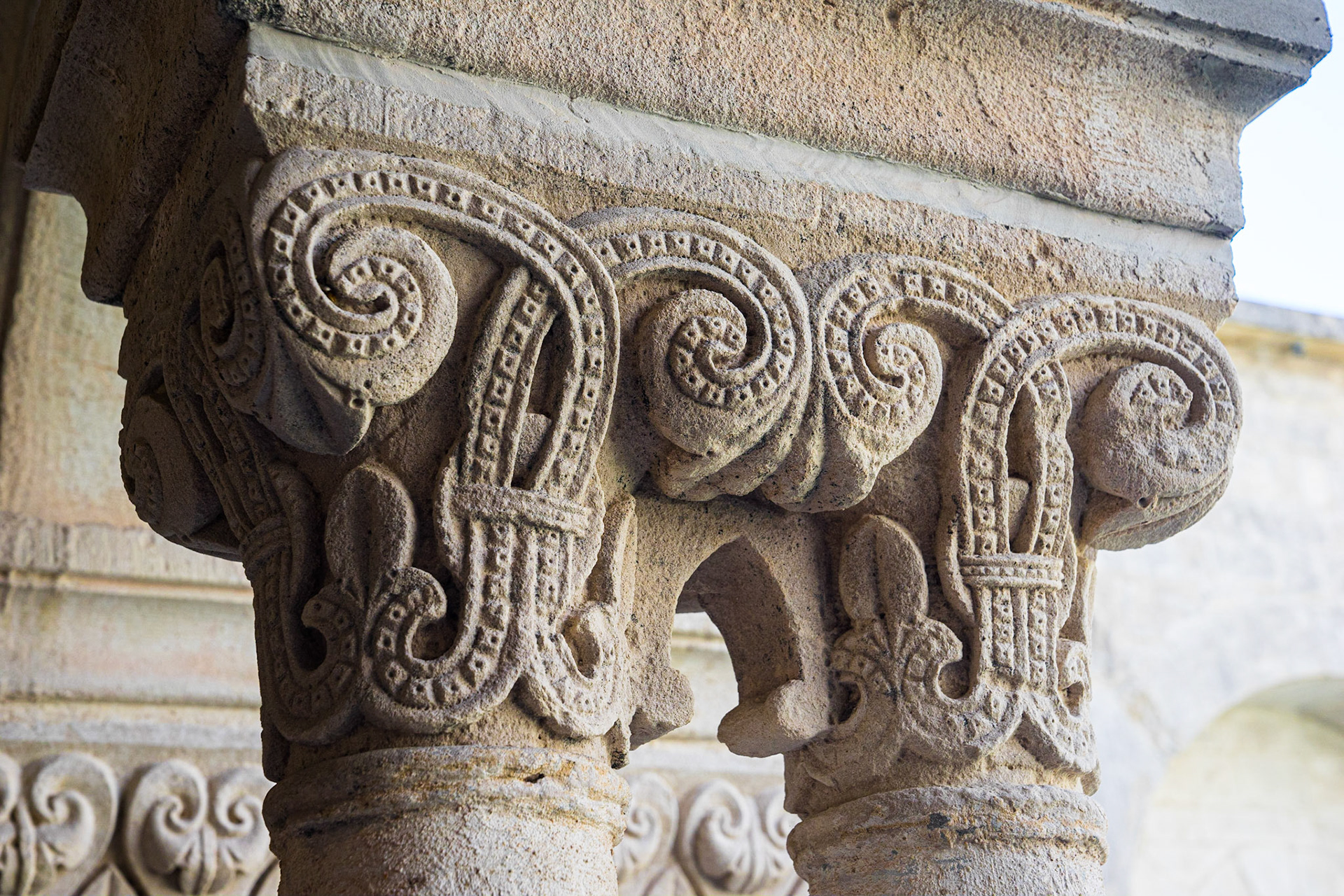Southern French Gothic architecture arose in the early 13th century following the victory of the Catholic church over the Cathars, as the church sought to reestablish its authority in the region. Romanesque architecture persisted for longer in the south of France than in the north. As a result, Southern French Gothic is simpler and less ornate. The local building material did not lend itself to ornamentation; the lava of Auvergne, the granite of Limousin, and the brick of the Toulouse region are unyielding to sculpture.
A fine realization of Southern Gothic was Albi’s cathedral, with its gaunt majesty. It is believed to be one of the largest brick buildings in the world. The forbidding structure rose between two harsh epochs—the Albigensian Crusade and the Hundred Years’ War. The new mendicant Orders of Francis and Dominic advocated austerity. With windows placed high up between the buttresses, entrances guarded by a moat, and extremely thick walls around the base to deter siege, the cathedral is a fortress against heresy.
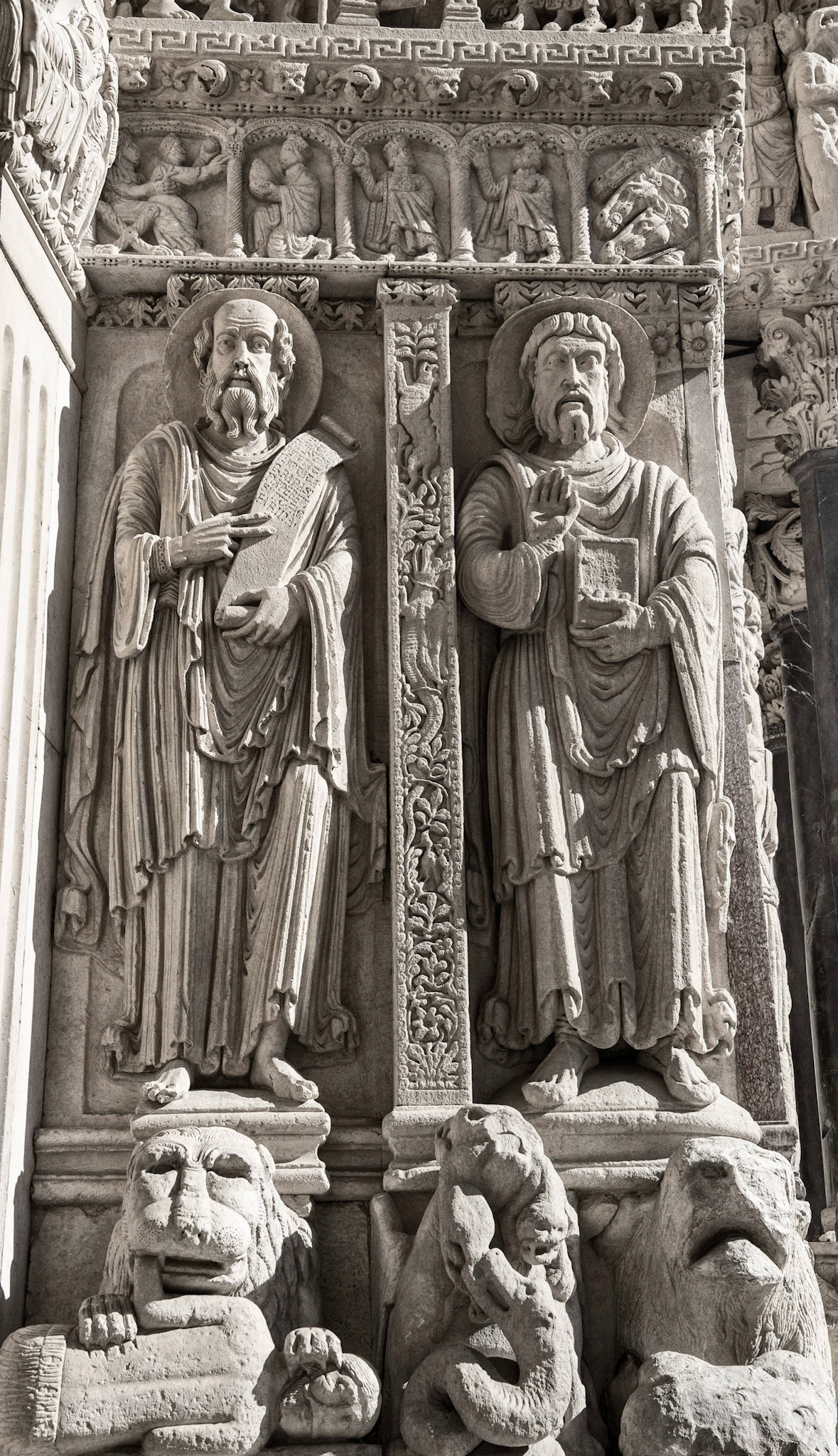

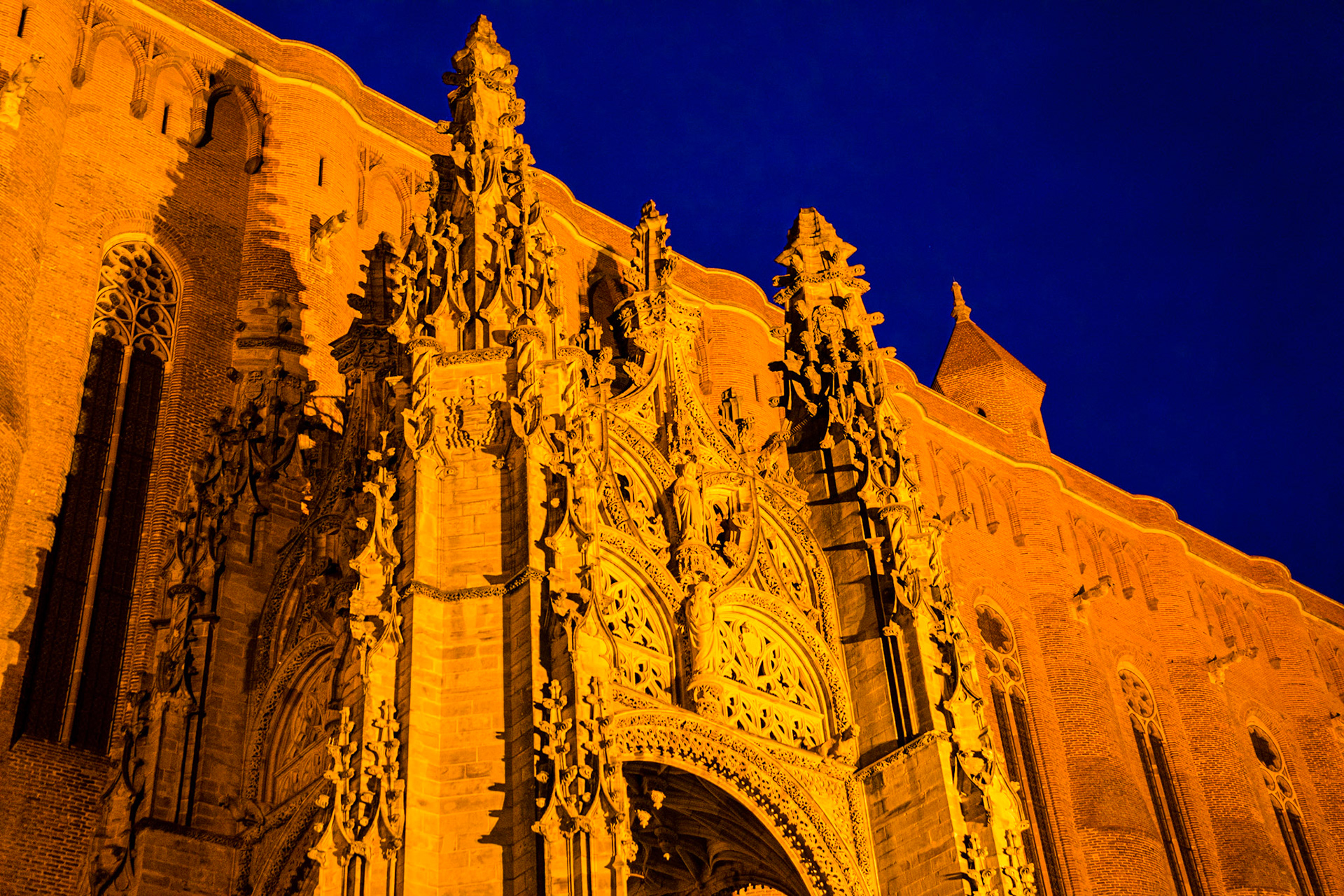



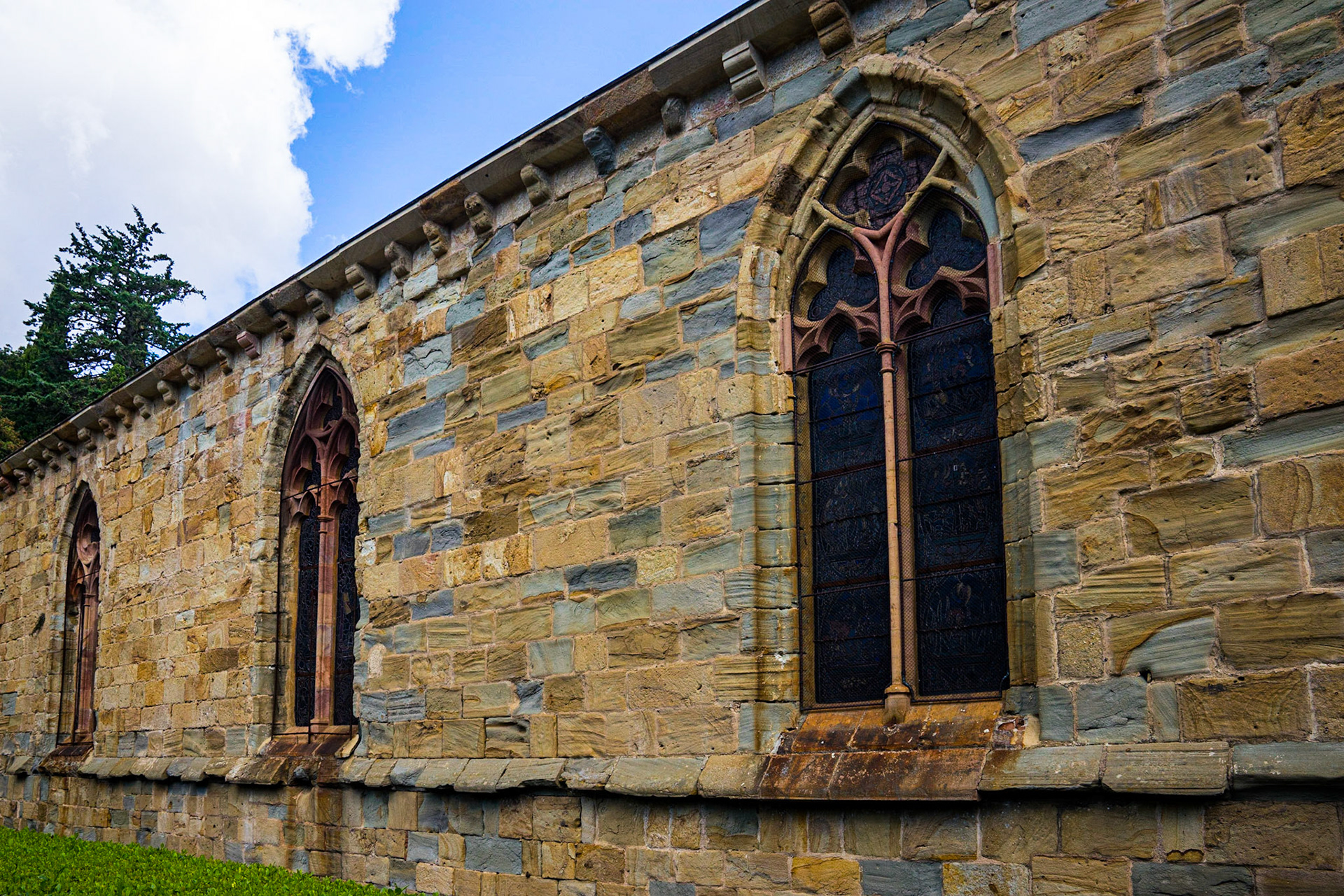

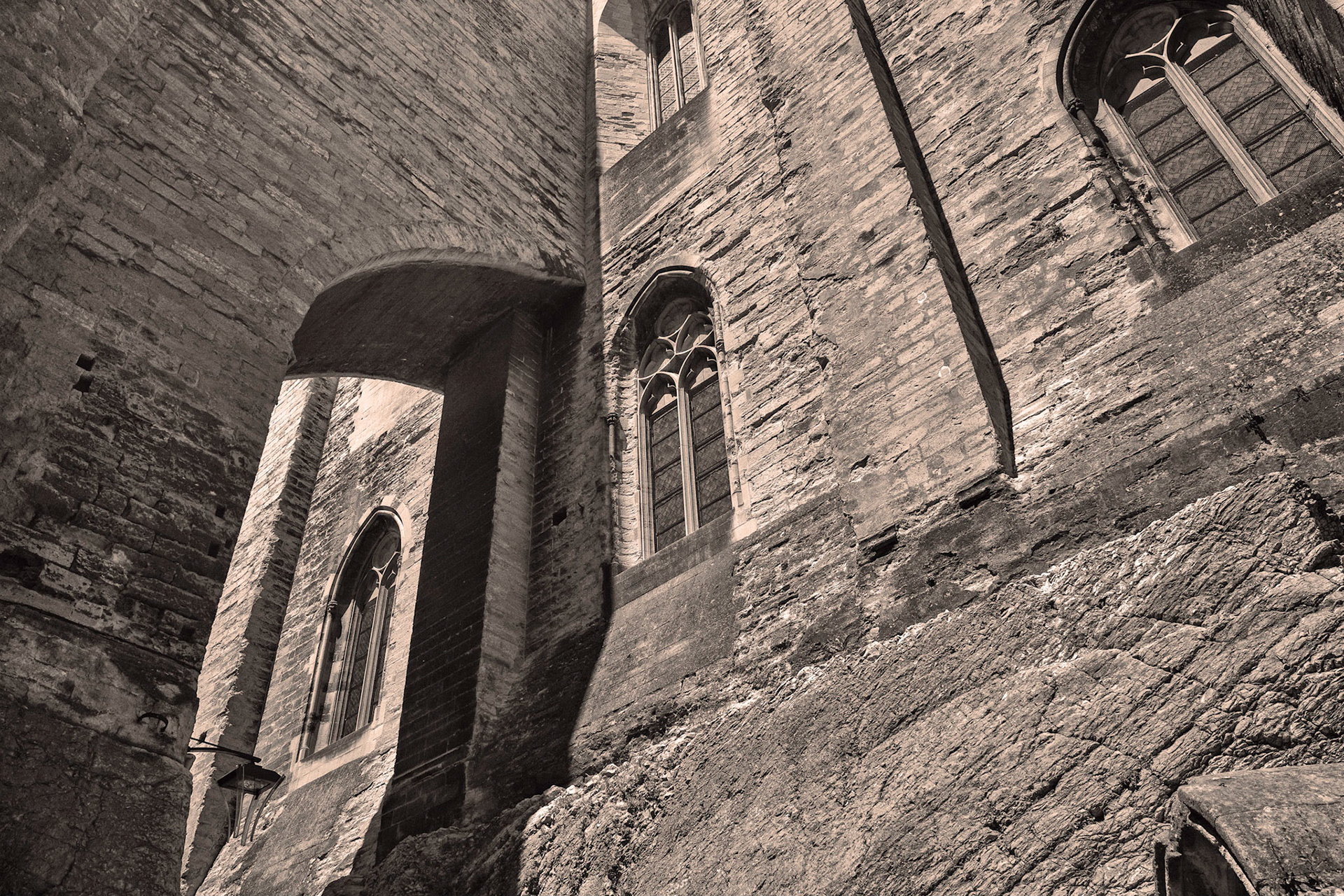
Cloisters
The cloister is a porticoed court on a square plan situated at the heart of the monastic community; around it stand the buildings of everyday life (chapter, cathedral, collegiate church or monastery proper). The cloister acts as a service gallery, a covered walk, a place of passage and meditation.
The Languedoc-Rousillon region contains more than 25 monasteries. Some began as Benedictine monasteries as early as the 6th C, and other Romanesque abbeys became important stopping places for 11th-13th C pilgrims traveling to the shrine of Santiago de Compostela in Spain. But monasteries also became important in the Albigensian Crusade. The leaders of the crusade were Cistercian monks -- not simply praying for the crusaders but directing their assaults and even joining them in combat.
Many of the Cistercian monasteries contain beautiful 13th century cloisters, with intricately formed gothic arches and columns, carved from the beautiful pinkish stone of the Pyrenees known as "Languedoc marble."
Cistercian monasteries in Languedoc-Roussilon,
with radius of one day's walk indicated

